Ordering software for restaurants

Key Takeaways
Centralize all restaurant orders — online, in-house, and delivery — with one streamlined system.
Save time, reduce errors, and enhance guest satisfaction through automated order management.
Cut costs and boost revenue by eliminating third-party commissions and gaining full control over customer data.
Why modern restaurants need ordering software
Running a restaurant in today’s market is about more than just great food and friendly service. Guests expect convenience, speed, and the ability to order on their own terms - whether that means reserving a table online, scanning a QR code to order from their phone, or arranging delivery straight to their doorstep.
For many restaurants, managing these expectations is a daily struggle. Phone orders take up valuable staff time, handwritten notes lead to mistakes, and delivery platforms often charge high commissions that eat into profits. The result is a system that frustrates employees, disappoints guests, and limits growth potential.
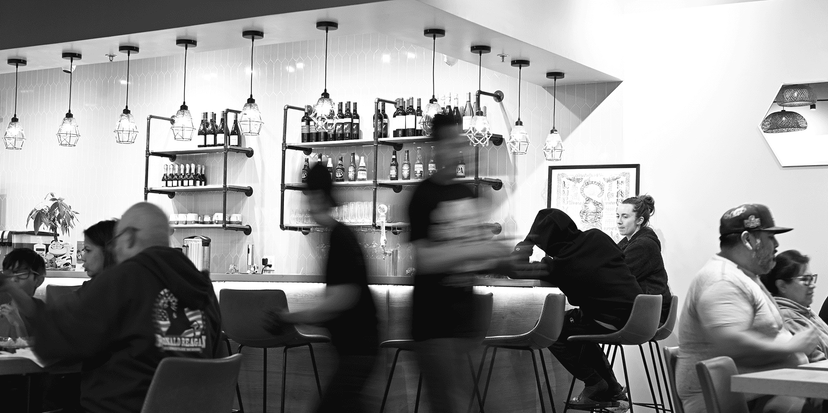
A smarter solution for restaurants
This is where modern ordering software for restaurants comes in. Instead of juggling multiple tools or relying on expensive third-party services, a single integrated platform allows you to manage every type of order in one place. From online and mobile orders to pickup, delivery, and in-house table service, all processes are streamlined and automated. That means fewer errors, faster turnaround times, and a more professional experience for your guests. Most importantly, it puts you back in control of your business by reducing costs, protecting your customer relationships, and creating new opportunities to increase revenue.
4 Key challenges restaurants face without ordering software
Running a restaurant without a modern ordering system comes with multiple hidden costs. From lost orders and frustrated staff to unhappy guests and missed revenue, these challenges can quietly limit growth. Understanding the most common pain points highlights why investing in the right software is essential.
1. Inefficient phone orders and manual processes
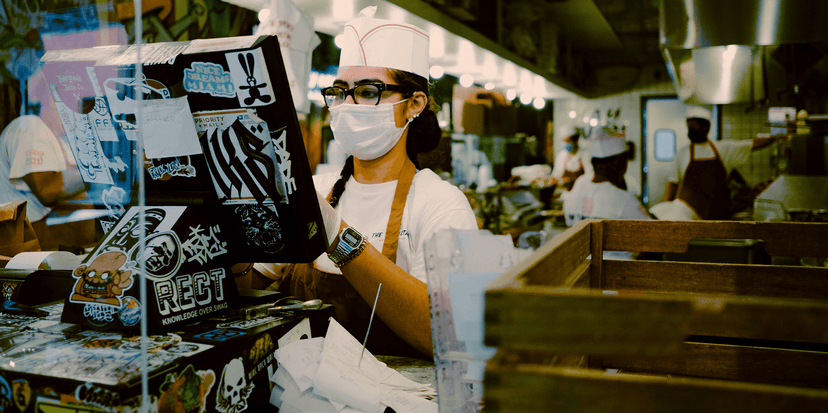
Many restaurants still rely heavily on phone orders, which can be time-consuming and prone to errors. Staff have to juggle multiple calls while also serving guests, which often leads to mistakes in the kitchen and delayed service. Over time, this inefficiency not only frustrates employees but also reduces the overall guest experience, impacting repeat business and long-term revenue.
2. High commissions from third-party platforms
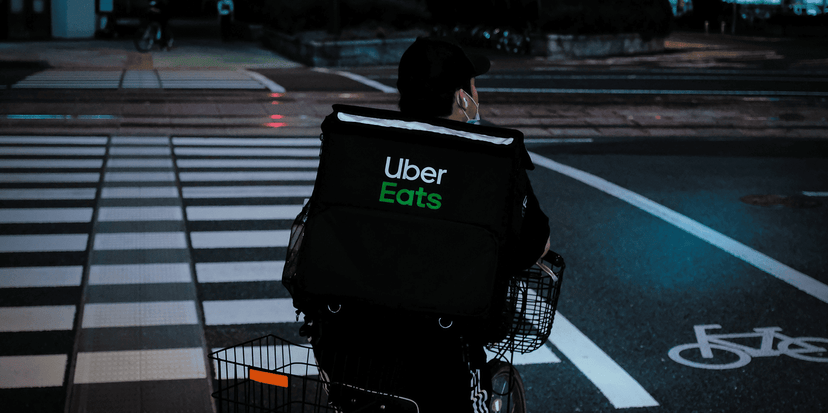
Using third-party delivery apps can seem convenient, but these platforms often charge high commissions, reducing your profit margin. On top of that, they control the customer relationship, making it harder to build loyalty and promote your brand. Restaurants that depend solely on these platforms may struggle to grow independently and maintain control over their operations.
3. Inconsistent guest experience

Without a unified system, orders from different channels - in-person, online, or via phone - can lead to inconsistent experiences. Guests may encounter slow service, missing items, or incorrect orders, which damages reputation and discourages repeat visits. A seamless, professional ordering experience is crucial for keeping customers satisfied and encouraging loyalty.
4. Limited insights and data
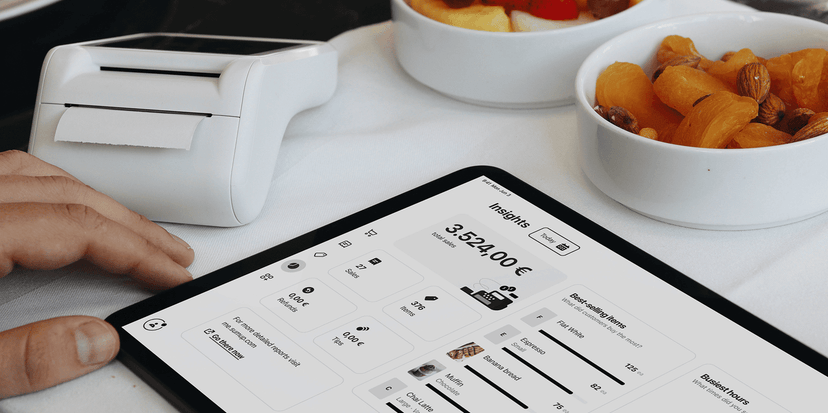
Traditional ordering methods provide little visibility into customer behavior, sales trends, or menu performance. Without analytics, restaurants cannot make informed decisions to optimize operations, marketing, or menu offerings. This lack of data can result in missed opportunities to increase efficiency and revenue.
How ordering software solves these challenges
Modern ordering software for restaurants streamlines operations, reduces errors, and improves the guest experience. By centralizing all orders - online, in-house, and delivery - restaurants gain full control over their processes while saving time and money. Here’s how the right system transforms day-to-day operations:
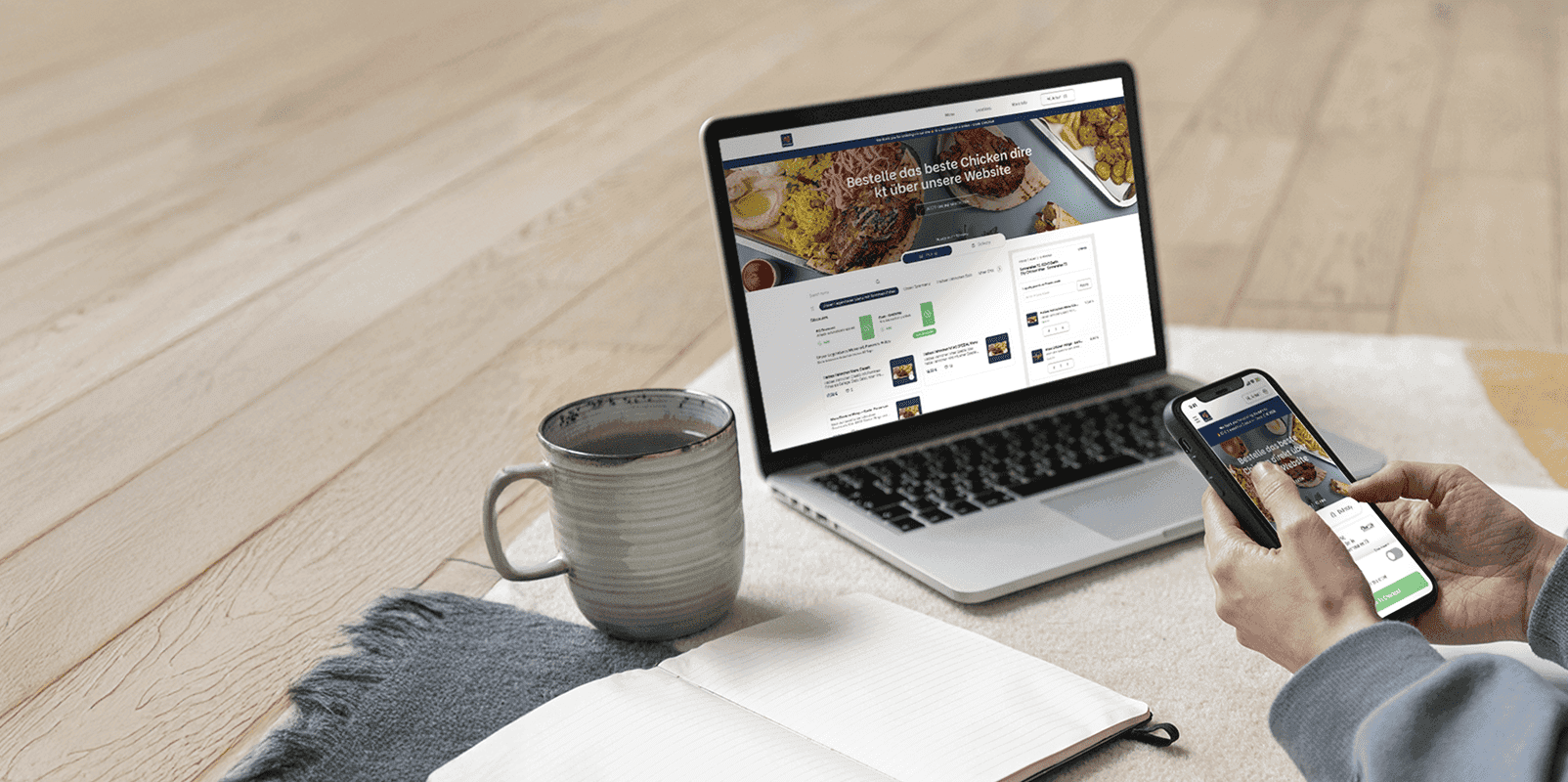
Streamlined online and mobile ordering
With integrated online and mobile ordering, guests can place orders directly from your website or app. This eliminates the need for phone calls, reduces mistakes, and speeds up service. Customers enjoy a seamless, convenient experience, while staff can focus on preparing food and providing excellent service rather than managing orders manually.

Optimized pickup and delivery management
Integrated delivery and pickup management helps restaurants track orders, drivers, and delivery zones in real time. Orders are routed automatically, ensuring timely fulfillment and fewer mistakes. By consolidating all channels in one system, restaurants save time and reduce the complexity of coordinating deliveries manually.

POS and payment integration
A centralized point-of-sale system ensures all orders - online, in-house, or delivery - are captured in one platform. Payments are processed securely, and the system can comply with local regulations like KassenSichV in Germany. This reduces administrative work, prevents errors, and gives you full control over your financial data.
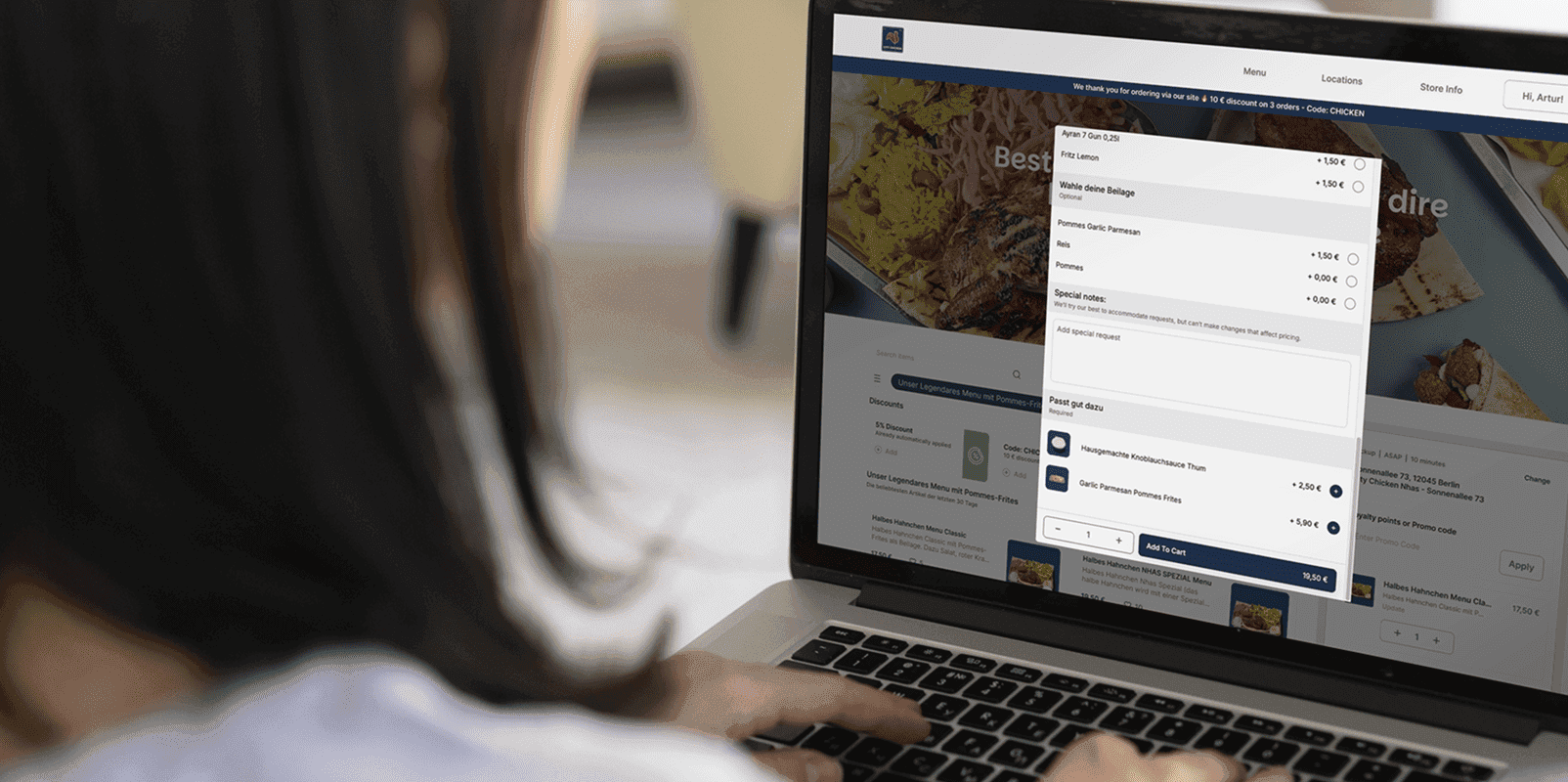
Menu management and upselling tools
Easily update menus, add specials, and highlight high-margin items. Upselling tools encourage guests to add sides or drinks, increasing average order value without extra effort from staff.

Analytics and reporting dashboard
Ordering software provides actionable insights into sales trends, popular menu items, and customer behavior. With real-time analytics, restaurants can optimize menus, adjust staffing, and develop targeted promotions. Data-driven decisions help increase revenue and improve operational efficiency.
Benefits of ordering software for restaurants
Investing in ordering software goes beyond simply digitizing your menu - it transforms the way your restaurant operates. Here’s how the right system delivers real results:
Increase revenue and order volume
By offering multiple convenient ordering channels - online, mobile, QR codes, and delivery - restaurants can capture more orders and increase average ticket size. Upselling features, combo suggestions, and promotions encourage guests to add items, boosting revenue without additional staff effort.
Save time and reduce errors
Automated order processing eliminates the need for handwritten tickets and reduces mistakes caused by miscommunication or busy phone lines. Staff can focus on preparing food and serving guests, rather than managing orders manually. This efficiency improves workflow and allows your team to deliver a better guest experience.
Enhance guest satisfaction
A seamless ordering experience makes guests happier and more likely to return. Faster service, accurate orders, and convenient payment options create a professional, modern dining experience. Happy customers lead to positive reviews, repeat business, and stronger brand loyalty.
Lower costs and protect margins
Reducing reliance on third-party delivery platforms helps restaurants save on high commissions. Centralized order management minimizes staff errors and operational waste, allowing you to keep more of your hard-earned revenue while improving overall profitability.
Gain actionable insights
Built-in analytics and reporting provide real-time data on sales, menu performance, and customer behavior. With these insights, restaurants can make informed decisions about menu updates, staffing, and marketing strategies, ensuring smarter growth and better operational efficiency.
Why choose ordering software over traditional methods
Many restaurants still rely on manual order-taking or third-party delivery apps, but these approaches come with significant drawbacks. Ordering software centralizes all your operations, giving you control, efficiency, and better customer experiences. Here’s a clear comparison:
| Feature / Factor | Phone Orders & Manual Systems | Third-Party Delivery Apps | Ordering Software for Restaurants |
|---|---|---|---|
| Order Accuracy | Prone to mistakes, misheard orders | Usually accurate, but errors may occur in platform | Automated, direct-to-kitchen orders reduce mistakes |
| Revenue & Margins | No commissions, but lost orders & inefficiency | High commissions reduce profits | Retain full revenue, plus upselling opportunities |
| Customer Data | Hard to track, limited insights | Platform owns customer data | Full access to customer info for marketing & loyalty |
| Operational Efficiency | Slow, manual processes | Faster but dependent on external platform | Centralized management saves staff time |
| Guest Experience | Inconsistent, slow | Convenient, but platform branded | Seamless, professional, branded experience |
| Scalability | Difficult to expand or standardize | Limited flexibility | Easy to scale across multiple locations |
Making the right choice
By choosing a dedicated ordering system, restaurants take control of their operations, reduce reliance on costly third-party apps, and provide a superior guest experience. It’s not just a tool — it’s a strategic investment that improves efficiency, increases revenue, and strengthens your brand.

Frequently asked questions about ordering software for restaurants
Many restaurants still rely on manual order-taking or third-party delivery apps, but these approaches come with significant drawbacks. Ordering software centralizes all your operations, giving you control, efficiency, and better customer experiences. Here’s a clear comparison:
Take your restaurant to the next level
Managing orders, delighting guests, and growing revenue doesn’t have to be complicated. With the right ordering software for restaurants, you can streamline every aspect of your operations, reduce errors, and provide a seamless experience that keeps customers coming back.

Whether you run a single café, a busy urban restaurant, or a multi-location chain, this software adapts to your needs and helps you stay ahead of the competition. Don’t let outdated processes slow your growth — take control of your orders, your data, and your customer relationships today.
Start improving your restaurant operations now
Get a free demo
Speak with an expert and discover how the system works for your business.




